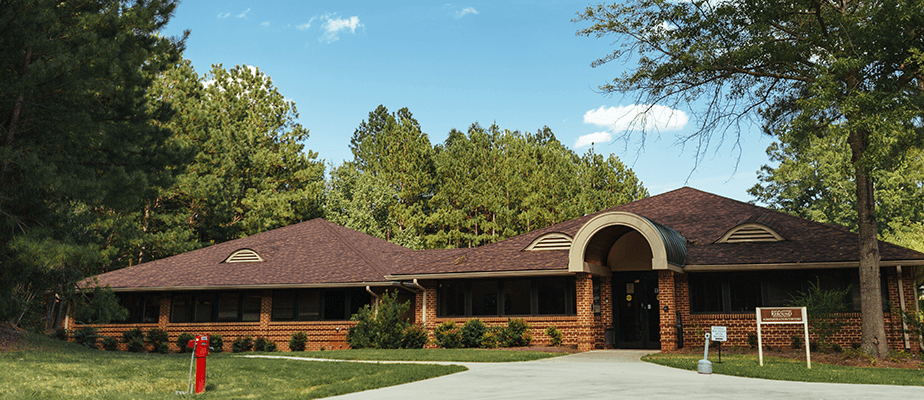Following a traumatic experience, most individuals become frightened, anxious, sad, and even disconnected. When they struggle to overcome these symptoms, treatment may be necessary.
More About PTSD
Learn more about PTSD
Posttraumatic stress disorder (PTSD) is mental illness that some people develop after witnessing or experiencing a traumatic event. Fear is a natural reaction to danger as it tells the body when it should prepare to defend itself against danger or run away from it. This type of fight-or-flight response is a healthy emotional and physical reaction experienced to protect a person from experiencing harm. However, for people who have PTSD, this reaction is damaged or changed. These people may feel frightened or stressed even when they are no longer in danger.
Today it is known that PTSD can affect people at any age, but it should be noted that not everyone who goes through an overwhelming, traumatic event will develop this disorder. Posttraumatic stress disorder develops differently in each individual who experiences it, as some notice symptoms in the days and weeks following the event, while others do not develop symptoms for weeks, months, or even years.
While any situation that causes people to feel helpless or as if they’re in danger can lead to PTSD, the most common traumatic events include:
- Terrorist attacks
- Sudden, unexpected death of a loved one
- Rape/sexual assault
- Kidnapping
- Physical assault
- War
- Natural disasters
- Car accidents
- Plane crashes
- Sexual or physical abuse
- Child neglect
Statistics
Statistics on PTSD
Each year, about 5.2 million adults struggle with PTSD, which is only a fraction of people who’ve experienced a trauma each year. PTSD is more common in women, with approximately 10% of women developing posttraumatic stress disorder at some time in their lives compared to 5% of men. About 7% to 8% of the population of the United States will develop PTSD at some point in their lifetime.
What Causes PTSD?
Learn about the causes and risk factors for PTSD
It’s thought that the development of posttraumatic stress disorder is caused by a variety of genetic, environmental, and physical factors working together. These factors can cause PTSD to develop in some individuals. Some of the hypothesized causes and identified risk factors for PTSD include:
Genetic: People who have first-degree relatives who have anxiety disorders or other types of mental illness are at a greater risk than others for developing PTSD after they have been exposed to an event that they find to be particularly traumatic.
Physical: Neuroimaging studies done on people who have PTSD have shown that there are marked differences in the structure of certain brain structures. Additionally, the neurotransmitter levels of dopamine and serotonin may be lower than in those who do not have an anxiety disorder.
Environmental: People who live in a high-stress environment, such as in an impoverished area where violence is a part of daily life, may be at increased risk for developing PTSD after a traumatic event.
Risk Factors:
- Living through dangerous events and traumas
- Being female
- Lower education
- Childhood trauma – neglect or abuse
- History of mental illness
- History of substance use or abuse
- Being hurt
- Seeing people hurt or killed
- Feeling horror, helplessness, or extreme fear
- Having little-to-no social support after the event
- Dealing with extra stressors following the event, such as pain, injury, loss of home, loss of employment, or loss of a loved one.
Signs of PTSD
Signs and symptoms of PTSD
The symptoms of PTSD can develop suddenly or may start gradually, worsening over time. Symptoms vary vastly among individuals based upon co-occurring disorders, individual genetic makeup, and symptom severity. These may include:
Re-Experiencing Symptoms:
- Intense physical reactions to triggers
- Intrusive, upsetting memories of the event
- Flashbacks – living through the trauma over and over
- Nightmares and bad dreams
- Frightening thoughts
- Disruptions in everyday routine
- Severe distress when reminded of the trauma
- Triggered by words, objects, or situations that remind the person of the event
Avoidance Symptoms:
- Emotional numbing
- Guilt
- Depression
- Anxiety and worry
- Feeling detached from others
- Avoiding certain places, events, or people that remind a person of the trauma
- Loss of interest in previously enjoyable activities
- Sense of a limited future
- Loss of interest in life
- Challenges recalling important parts of the traumatic event
Hyperarousal Symptoms:
- Feeling constantly tense or on-edge
- Insomnia or challenges staying asleep
- Difficulties sleeping and eating
- Stress
- Anger
- Easily startled
- Hard time concentrating
Other Symptoms of PTSD:
- Anger
- Feelings of betrayal and distrust
- Feeling alienated from others
- Irritability
- Guilt, shame, or self-blame
- Substance or alcohol abuse
- Hopelessness about the future
- Suicidal thoughts
Effects of PTSD
The effects of PTSD
Left untreated, it is rare for PTSD to go away on its own. However, with proper treatments and lifestyle changes, those who are struggling with PTSD are able to lead happy, productive lives. Some of the long-term effects that may develop as a result of untreated posttraumatic stress disorder include:
- Substance abuse and addiction
- Lower income
- Domestic and child abuse
- Social isolation and withdrawal
- Loss of occupational or scholastic functioning
- Decreased ability to have successful interpersonal relationships
- Divorce
- Violence
- Anxiety
- Worsening physical health problems
- Depression
- Anger
- Mood swings
- Self-harm
- Suicidal thoughts and behaviors
Co-Occurring Disorders
PTSD and co-occurring disorders
Posttraumatic stress disorder often presents with a number of other types of mental health disorders. In fact, 80% of people who have PTSD experience symptoms of another mental health concern. Some of the most common co-occurring disorders may include:
- Depressive disorders
- Anxiety disorders
- Alcohol use disorder
- Other substance use disorders
- Obsessive-compulsive disorder (OCD)
- Conduct disorder
- Oppositional defiant disorder (ODD)

















